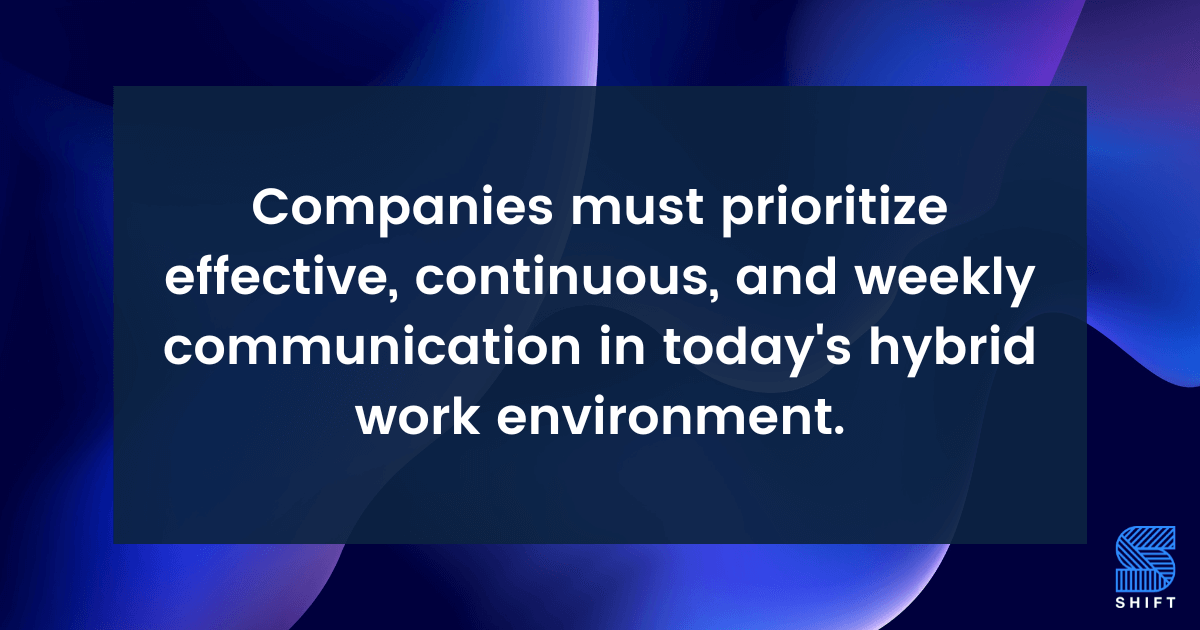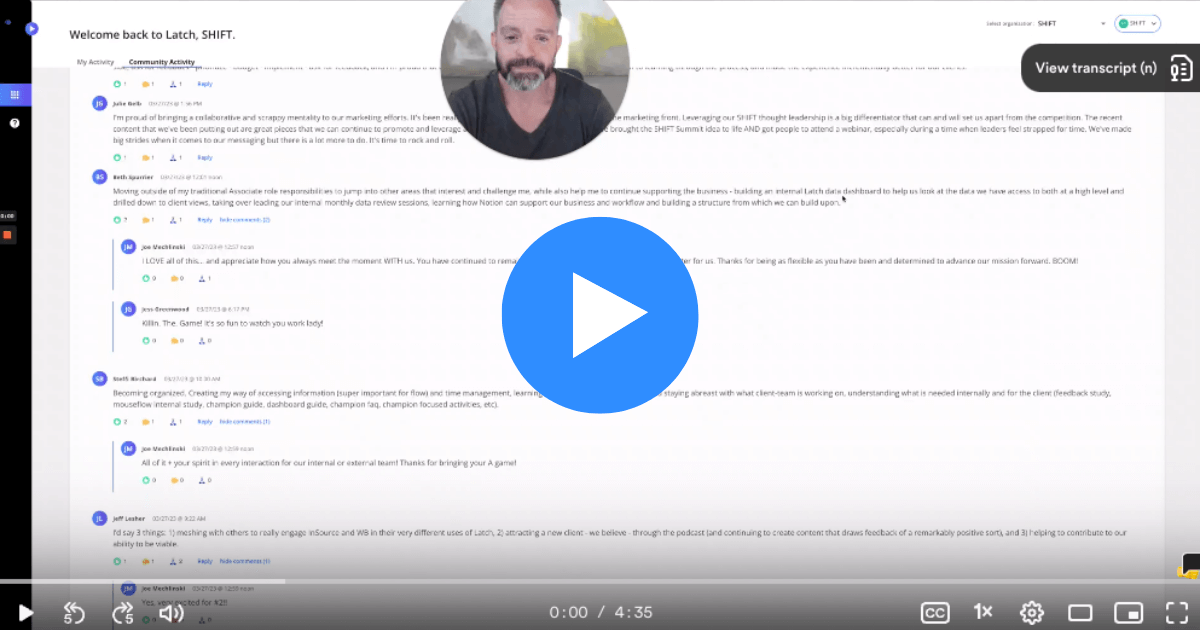
Have you ever witnessed your team do the exact opposite of what you said?
Or maybe your team failed to get you the necessary information to make a critical decision?
The Titanic's tragic story is an example of how lag time and miscommunication can create disastrous consequences.
The grand ship, considered unsinkable, collided with an iceberg on its maiden voyage, leading to the loss of more than 1,500 passengers and crew members.
The disaster resulted due to many factors, but one of the most significant was a failure to communicate effectively.
The Titanic's crew received numerous warnings about icebergs in the area, but they were not taken seriously. In fact, the wireless operator who received the last and most urgent warning from a nearby ship, the SS Californian, was preoccupied with sending personal messages and failed to pass them along to the bridge.
Ultimately, the lag time between the person with the right information and the people who needed it was too long and proved devastatingly tragic.
Beyond this, the crew was not accustomed to receiving ice warnings via wireless, and there was a lack of understanding about the urgency of the messages. Additionally, the ship's layout meant there were no binoculars available to the lookouts, who might have spotted the iceberg in time to avoid a collision.
A recent report indicates, during peak stress, the Titanic was literally turned the wrong way.
Think about that… they literally turned the ship into the iceberg and not away from it.
Today, we face a similar challenge in the world of hybrid work.
With executives seeing employees less frequently, communication, trust, and authentic connections are suffering.
We've written about this:
- What's Moving Faster?
- Is Your Team Flying in Formation?
- Confessions of a CEO
- Feeling Ignored as CEO?
- From Chief Executive Officer to Chief Engagement Officer
TL;DR – few organizations are in flow right now.
No one feels totally grounded, and no one feels connected like we did when we were with people (not just in an office).
In fact, research shows 93% of communication is nonverbal, and without face-to-face interaction, it can be challenging to maintain trust and create a sense of team unity.
As a result, lag time increases, and it takes longer for information to reach the right people and inspire action.

Lag time shows up in the study of Transmission Chain Experiments, also known as Whisper Down the Alley and the Telephone Game.
We all remember this game from grade school. Someone starts by whispering a simple message like, "let's have fun in the sun."
Twelve kids later, the message returns as: “let's not get burned in the sun."
WTH?
We need to acknowledge humans haven’t come close to mastering transmitting information even after two million years. The internet democratized access to information more than anything since the printing press, and we are not building a different muscle group.
So how do you close your lag time?
Start with recognizing you have one.
I meet with CEOs all the time, and they don't spend even a second thinking there is any upside to getting this part right. If you conduct a simple annual employee survey, the best companies in the world still only get 70-80% voluntary participation.
Like the Titanic, this won't work during peak challenges.
If you define communication only as the response you get back, this is a fatal assumption.
George Bernard Shaw had it right, the single greatest illusion is that communication has taken place.
Lag time is the delay between when an event occurs and when it is acted upon. In organizations, lag time can cause significant problems and missed opportunities. It can also be the single greatest opportunity for upside within a CEO's influence.
One of the main pain points of lag time is the lost opportunity cost. A study by McKinsey & Company found 20% to 30% of the value created by strategic initiatives is lost due to delays in execution. This means even if a company has a great idea, it won't fully realize the benefits if it takes too long to implement it.
Another pain of lag time is the cost of firefighting. When organizations don't act on problems quickly, those problems tend to get worse and more complex. As a result, employees end up spending more time putting out fires instead of focusing on important work. This can lead to lower productivity, higher stress levels, and ultimately, a negative impact on the bottom line.

And reducing lag time has its benefits. For example, a study by Deloitte found companies with faster decision-making processes had higher revenue growth than their slower counterparts because faster decision-making allows organizations to respond more quickly to market changes and take advantage of new opportunities.
Another gain of reducing lag time is increased agility. When organizations can act quickly, they can pivot and adjust their strategies as needed. This is especially important in today's fast-paced business environment, where change is constant.
So how can CEOs reduce lag time in their organizations?
Create a culture of urgency by emphasizing the importance of acting quickly and decisively and rewarding employees who do so. It also means empowering employees to make decisions and take action rather than waiting for approval from higher-ups.
Another way to reduce lag time is to streamline decision-making processes. This can involve simplifying approval workflows, reducing the number of decision-makers involved in a process, and setting clear deadlines for decisions to be made.
The solution to this challenge is clear.

This means creating channels for open and honest communication and encouraging employees to share their concerns and ideas. It also means investing in the right technology to facilitate communication, such as video conferencing and collaboration tools.
This is where Latch comes in.
There is no lag with Latch.
While on spring break this week, I was able to send out three priorities for the week, and by Monday at 5 p.m., I received three inspired actions per person by 90% of our team.

Think about that “lag time.” In less than 24 hours, everyone is rowing in the same direction.
And it’s not just because we have a tool. Latch created a different type of culture in our organization. Leaders must create a culture of trust and accountability where employees feel comfortable sharing their thoughts and concerns. Which also means leading by example and communicating regularly and openly with their team.
Not everyone learned a lesson from the Titanic. The engineers of the Challenger and the O-rings knew something was amiss and couldn’t get through to management that something wasn’t right.
You are only as good as the information you have.
Unfortunately, in times of stress, we revert back to old habits.
As we navigate the challenges of hybrid work, we must learn from the mistakes of the past and prioritize communication as a key element of success. By doing so, we can create a workplace where everyone feels connected, valued, and inspired to take action.
Next week, I will walk you through how to get your team ready for a monster moment as I am headed to TED Global the week of April 17 to facilitate a session on the future of work and debut Latch to the TED community as the first asynchronous AI tool for executives to get their teams on the same page without scheduling more meetings.









